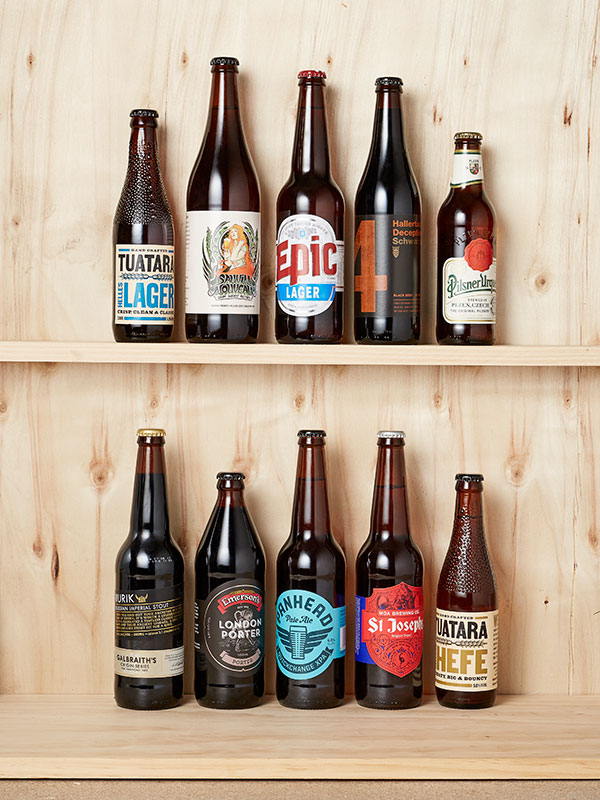We're spoiled for choice when it comes to beer styles and sometimes it can all seem a tad confusing. Taking it back to basics is a nice way to begin and it all boils down to two choices: ale vs lager
When you first start delving into craft beer, one of the most mind-boggling things to comprehend is the myriad of styles available. The sheer number of them is daunting enough, then add confusing acronyms like “NZUSXPA” and “DIPL”, throw in some oxymoronic styles like white stouts and black IPAs, and you have your work cut out for you getting your head around it all. Granted, drinking and learning about beer is the most enjoyable kind of work there is, but where to even begin?
Thankfully, there’s a very simple starting point for exploring beer styles. Before we start worrying about distinguishing geuze from gose, it’s best to begin with the two kingdoms at the very top of the beer family tree: ales and lagers.
All beers, save for a small number of crossover styles, can be categorised as being either an ale or a lager. Some people are surprised to learn this, as when they think of the word “lager” they think only of the light, fizzy macro beers that taste best after mowing the lawns. In fact, that is only one style of lager — “international pale lagers”, they’re often dubbed — just as a pale ale is only one of many kinds of ales.
Both ales and lagers are made from the same four basic ingredients: water, malt, hops and yeast, and yet there are clear differences in taste, feel and appearance between the two. Broadly speaking, lagers are crisp and clean while ales tend to be fruitier, richer and more complex. So what divides them?
The one and only ingredient that sets ales and lagers apart is the yeast. This clever microorganism is responsible for converting sugar from the malt into booze and fizz (known as the fermentation process), and ales and lagers use different types of yeast to do the job. In addition, ales and lagers ferment at different temperatures for different lengths of time. These variations may seem like they’d be too minor to affect the taste much, but in fact they produce strikingly unique beers.
Ales
Ales are made with top-fermenting yeast, which thrives at room temperature. During fermentation the yeast produces fruity and spicy flavour compounds which contribute to the beer’s character — think of the banana and clove flavours in a hefeweizen, for example. The yeast also produces a foam which rises to the top of the fermentation tank, which is where the term “top-fermenting” comes from. Because ales have been around for so much longer than lagers, there are many more types of ales than there are lagers. These include porters, stouts, pale ales, IPAs, amber ales, brown ales, and specialty Belgian styles.
Lagers
Lagers are made with bottom-fermenting yeast and fermented at cooler temperatures over a longer period than ales. The low temperature inhibits the development of fruity flavour compounds, which is why lagers typically have a crisp, clean taste. Although we often use the word “lager” to mean pale lager, some styles are dark, heavily hopped, or boozy. Pilsners are the most well-known lager style, but others include schwarzbier, bock, helles, marzen and rauchbier. You may also have also come across the odd IPL (imperial pale lager) recently, which is the lager family’s answer to a strong, hoppy IPA.
Now that you know what separates a lager from an ale, your homework is to try a range of styles within each category. I’m not going to lie, it’s going to be an arduous task, but it’s really the only way to learn. Why not get started with some of the beers and ales we've selected for you?
Ales: Emerson’s London Porter, Galbraith’s Rurik Russian Imperial Stout, Panhead Quickchange XPA, Tuatara Weiz Guy, Moa St Josephs Belgian Tripel.
Lagers: Pilsner Urquell, Epic Lager, Hallertau Deception Shwarzbier, Invercargill Smokin’ Bishop, Garage Project Sauvin Nouveau.
Through the ages
For the first 6500-odd years of brewing, all beers were ales. It was only in the Middle Ages, when Bavarian brewers started storing their beers in ice caves throughout the winter that the first lagers emerged. These beers took a lot longer to ferment than the ales they brewed in the summer, but were pleasantly smooth, crisp, and pure-tasting. Sometime during the 15th century, monks brought the yeast used to brew these beers from Bavaria to Bohemia (now Czech), where the first pilsners were brewed in the city of Pilsen.
A few hundred years later, in the 19th century, two technological inventions led to the worldwide spread of lager: the microscope and the refrigerator. Under the microscope, scientists were able to study the yeast used in the cold-fermented beers of Bavaria and Bohemia and isolate specific strains for commercial production. At the same time, the invention of refrigeration meant lager could be brewed all year round. Over the next century, lager swept the world, dominating beer markets and almost wiping out ale brewing in some countries. Thanks to Belgian and British brewers who clung to their beloved ales, and the more recent efforts of the craft beer movement, we now have a huge number of ale and lager styles to choose from.








